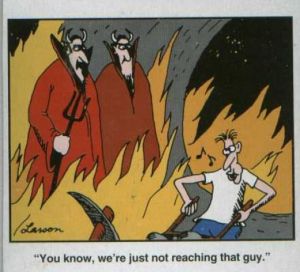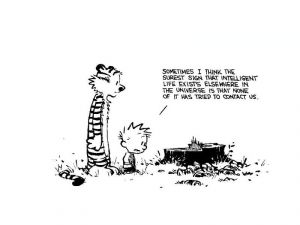Comics /
Spotlight
Classification and Comics
By Hervé St-Louis
January 23, 2013 - 11:45
Classification matters even without being aware of how we differentiate and classify entities affect how we perceive and interact with them. In my continuing study of the philosophy of information, as a PhD student at the Faculty of Information at the University of Toronto, I’m always curious about the ties to the world of comics. Classification in comics is at the core of what the medium and the industry are about and perhaps shedding more light on this can help.
Classification taxonomist Robert Sokal argues, is an act that humans, animals and possibly plants practice. We differentiate entities according to many traits or schemes. Some argue that classification is innate and may reflect nature. Some argue that we construct categories. In the case of comics, classification is potentially completely constructed, or should I say artificial. Affirming this may help avoid conflicts and tensions about what is a comics and what is not. What belongs to comics or not is the first question that comes up when one thinks about comics and classification. In another word, I’m asking what is a comics? This is the first class, the first differentiation, the first attempt to make sense.
Here are three ways that we can use to classify what is a comics and what is not. The first one is based on a philosophical perspective called essentialism that was inspired by Aristotle and reinforced by Descartes. There is an assumption in Aristotelian classification that every entity in nature has an inner essence that determines where it belongs or not. For example, if you spot a cat with three legs, you will still classify the animal as a cat, whether traditionally a cat has four legs. There is an essence to what it means to be a cat that one just recognizes.
To some extents, looking at a say, a comic strip of
Peanuts may generate the same reaction in you. You’ll tell yourself, this is a comics. Looking at a still illustration of the
Far Side may generate in some people the same reaction. They would dump the cartoon into the comics’ class. But others, following Scott McCloud and other comics theorists would say that a single caption of the Far Side is not a comics. It is comic art based on cartoon stylings and renderings. But it does not have the sequential traits that they use to classify what is a comics or not.
The definition of comics as defined by
Scott McCloud in
Understanding Comics states that for a comics to be a comics, it needs to have a sequence of at least two images with an element of closure between the two visual captions, where the mind must fill in the gaps to explain the transition from one drawing to another. This kind of definition reminds me of what British philosopher John Locke would say about the essence of comics. If he could peak close enough with a microscope, he could see the underlying bits that shape a comic book. In a sense, arguing that a comics is build from at least two parts may be a Lockean way of finding out the parts that create the essence for an entity.
But there is another way to make classifications. This classification scheme is called cluster analyses. It looks at a cluster of traits which may or may not be shared systematically within the entire class defined as comics but with enough overlaps. In that perspective, the Far Side cartoon may very well be a comics because it shares enough traits with other comics such as
Detective Comics or
Wash Tubbs and Captain Easy. The Far Side is not generated as sequence of illustrations, yet is perceived as a comics nonetheless. Philosopher Ludwig Wittgenstein argues that the relatedness and the family traits between individual entities matters more than differences. One example he uses is the class called games. Scrabble and Monopoly are games, specifically board games. But baseball and softball are also games. Poker and Blackjack are card games. All these games are part of one family and share similar traits without sharing the same essence.
Philosopher Marc Ereshefsky introduces a third category to classification that is more controversial. He calls it historical classification.
Charles Darwin relied on historical classification. Historical classification looks at the genealogy of an entity to determine where it should it belong. For example, Looking at
Calvin and Hobbes, one can trace its history to the newspaper comic strip with a tradition of daily strips and coloured Sunday features. But is Calvin and Hobbes more of a Sunday comic strip or a daily black and white feature? Historical classification helps with such questions by introducing the concept of a hierarchy. One could argue that the daily comic strip came before the Sunday strips and therefore is more like a parent to the Sunday comic strip variant. Thus Calvin and Hobbes evolved from the daily comic strip which also birthed the Sunday comic strip. But before I get flamed for making this statement, one could argue that the daily comic strip originated from the single comic strip that was published on any single day of the week in black and white and that even before that, these strips originated from political cartoon gags that consisted of one illustration, thus bringing current comic cartoon gags such as the Far Side inside the historical loop of what a comic strip is and by extension what a comics is.
The comic strip, in this historical approach to classification would be the source from which comic books came from. Based on this proposition, animated cartoons could also be branded comics in that they were created much the same way by cartoonists such as Winsor McCkay that worked on comic strips like
Little Nemo in Slumberland. Their sequential qualities and inked lines are very reminiscent of illustrations stemming from comic strips at the time. Hence, I’ve committed the biggest heresy in the field of comics and animation by lumping the two fields together, like all these lay people who can’t tell the difference between the two media! Except in my case, I’ve done so through a philosophical inquiry based on historical classification!
Of course, since comics are man-made constructs, their classification can be modified and argued without any certainty or definitive position as long as the classification scheme used can be defended. In the past, I had a more stringent and restrictive view of what comics and sequential art were, influenced mainly by Scott McCloud. But classification, although many claim is natural because living organism instinctively just classify their environment into entities may be a very artificial activity to respond to a natural world where dividing lines can be reshaped by thought.
Last Updated: March 3, 2025 - 20:40

